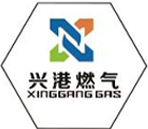
Dec . 17, 2024 06:45
Back to list
صمام تنظيم
Understanding Flow Regulation Valves
Flow regulation is a crucial aspect of fluid dynamics, particularly in various industrial applications where maintaining an optimal flow rate is essential for efficiency and safety. Among the myriad of components that help manage fluid flow, flow regulation valves stand out as vital instruments. In this article, we will explore the mechanisms, applications, and benefits of flow regulation valves, with a particular focus on their importance in various industries.
What is a Flow Regulation Valve?
A flow regulation valve, often referred to as a flow control valve, is a type of valve designed to regulate the flow of fluid through a system. These valves can control the fluid flow rate by adjusting the size of the flow passage, effectively allowing or restricting fluid movement. Depending on the design and purpose, flow regulation valves can be mechanical, pneumatic, or electronic, serving various operational needs across multiple sectors.
Mechanisms of Flow Regulation
Flow regulation valves operate through a variety of mechanisms. The most common types include
1. Globe Valves These are designed specifically to regulate flow, featuring a spherical body shape that allows for fine control. The valve disc moves up and down to change the flow area, making it ideal for throttling applications.
2. Ball Valves While primarily used for shut-off applications, certain designs of ball valves can also be employed for flow regulation. By partially opening the valve, users can control the flow rate effectively.
3. Butterfly Valves These are used for quick shut-off and can also regulate flow. The disc is pivoted in the middle, and by turning the handle, the flow area can be adjusted.
4. Electronic Flow Control Valves These advanced valves employ sensors and actuators to provide precise flow control. They can automatically adjust the flow based on real-time data, making them suitable for modern automated systems.
.
Flow regulation valves find applications across a wide array of industries. Here are some critical sectors where these valves play an essential role
صمام تنظيم

1. Water Treatment In municipal water supply systems, flow regulation valves help ensure consistent water pressure and flow rates, crucial for treating and distributing water safely.
2. Chemical Processing In industries where precise chemical mixing is required, flow regulation valves help control the proportions of different chemicals being combined, ensuring product quality.
3. Manufacturing In manufacturing processes that involve cooling or heating, flow regulation valves manage fluid flow in cooling systems and boilers, ensuring efficient thermal management.
4. HVAC Systems In heating, ventilation, and air conditioning systems, these valves help maintain the desired temperature and air quality by regulating the flow of coolant or heated air.
5. Oil and Gas In the oil and gas sector, flow regulation valves are crucial for controlling the flow of crude oil and natural gas, maximizing efficiency while adhering to safety protocols.
Benefits of Flow Regulation Valves
The implementation of flow regulation valves in industrial processes offers several advantages
1. Efficiency By maintaining optimal flow rates, these valves enhance system efficiency, reducing waste and energy consumption.
2. Safety Proper flow regulation minimizes the risk of overpressure, leaks, and other hazardous situations, ensuring safe operation of industrial systems.
3. Precision Control Many modern flow regulation valves come equipped with automation capabilities, allowing for precise flow management in real time, improving product consistency and quality.
4. Versatility With various types available, flow regulation valves can be tailored to meet specific system requirements across different applications.
In conclusion, flow regulation valves are pivotal components in numerous industrial processes. Their ability to control fluid movement not only optimizes efficiency but also enhances safety and product quality. As industries continue to evolve and automate, the importance of reliable flow regulation systems will only increase, ensuring that these valves remain at the forefront of fluid management technology.
Next:
Latest news
-
Safety Valve Spring-Loaded Design Overpressure ProtectionNewsJul.25,2025
-
Precision Voltage Regulator AC5 Accuracy Grade PerformanceNewsJul.25,2025
-
Natural Gas Pressure Regulating Skid Industrial Pipeline ApplicationsNewsJul.25,2025
-
Natural Gas Filter Stainless Steel Mesh Element DesignNewsJul.25,2025
-
Gas Pressure Regulator Valve Direct-Acting Spring-Loaded DesignNewsJul.25,2025
-
Decompression Equipment Multi-Stage Heat Exchange System DesignNewsJul.25,2025

